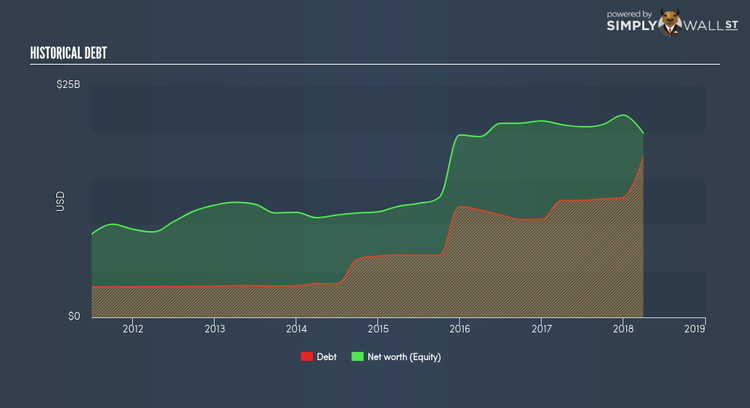What Investors Should Know About Marathon Petroleum Corporation’s (NYSE:MPC) Financial Strength

There are a number of reasons that attract investors towards large-cap companies such as Marathon Petroleum Corporation (NYSE:MPC), with a market cap of US$36.73B. One reason being its ‘too big to fail’ aura which gives it the appearance of a strong and stable investment. But, the health of the financials determines whether the company continues to succeed. This article will examine Marathon Petroleum’s financial liquidity and debt levels to get an idea of whether the company can deal with cyclical downturns and maintain funds to accommodate strategic spending for future growth. Note that this commentary is very high-level and solely focused on financial health, so I suggest you dig deeper yourself into MPC here. Check out our latest analysis for Marathon Petroleum
How does MPC’s operating cash flow stack up against its debt?
Over the past year, MPC has ramped up its debt from US$10.57B to US$12.95B – this includes both the current and long-term debt. With this increase in debt, MPC currently has US$3.01B remaining in cash and short-term investments for investing into the business. Additionally, MPC has generated US$6.61B in operating cash flow in the last twelve months, resulting in an operating cash to total debt ratio of 51.05%, meaning that MPC’s debt is appropriately covered by operating cash. This ratio can also be interpreted as a measure of efficiency as an alternative to return on assets. In MPC’s case, it is able to generate 0.51x cash from its debt capital.
Can MPC pay its short-term liabilities?
With current liabilities at US$10.48B, it appears that the company has maintained a safe level of current assets to meet its obligations, with the current ratio last standing at 1.28x. For Oil and Gas companies, this ratio is within a sensible range since there is a bit of a cash buffer without leaving too much capital in a low-return environment.
Can MPC service its debt comfortably?
MPC is a relatively highly levered company with a debt-to-equity of 86.89%. This is not unusual for large-caps since debt tends to be less expensive than equity because interest payments are tax deductible. Accordingly, large companies often have lower cost of capital due to easily obtained financing, providing an advantage over smaller companies. We can test if MPC’s debt levels are sustainable by measuring interest payments against earnings of a company. A company generating earnings before interest and tax (EBIT) at least three times its net interest payments is considered financially sound. In MPC’s case, the ratio of 6.04x suggests that interest is appropriately covered. Large-cap investments like MPC are often believed to be a safe investment due to their ability to pump out ample earnings multiple times its interest payments.
Next Steps:
MPC’s high cash coverage means that, although its debt levels are high, the company is able to utilise its borrowings efficiently in order to generate cash flow. Since there is also no concerns around MPC’s liquidity needs, this may be its optimal capital structure for the time being. This is only a rough assessment of financial health, and I’m sure MPC has company-specific issues impacting its capital structure decisions. I recommend you continue to research Marathon Petroleum to get a better picture of the large-cap by looking at:
Future Outlook: What are well-informed industry analysts predicting for MPC’s future growth? Take a look at our free research report of analyst consensus for MPC’s outlook.
Valuation: What is MPC worth today? Is the stock undervalued, even when its growth outlook is factored into its intrinsic value? The intrinsic value infographic in our free research report helps visualize whether MPC is currently mispriced by the market.
Other High-Performing Stocks: Are there other stocks that provide better prospects with proven track records? Explore our free list of these great stocks here.
To help readers see pass the short term volatility of the financial market, we aim to bring you a long-term focused research analysis purely driven by fundamental data. Note that our analysis does not factor in the latest price sensitive company announcements.
The author is an independent contributor and at the time of publication had no position in the stocks mentioned.

